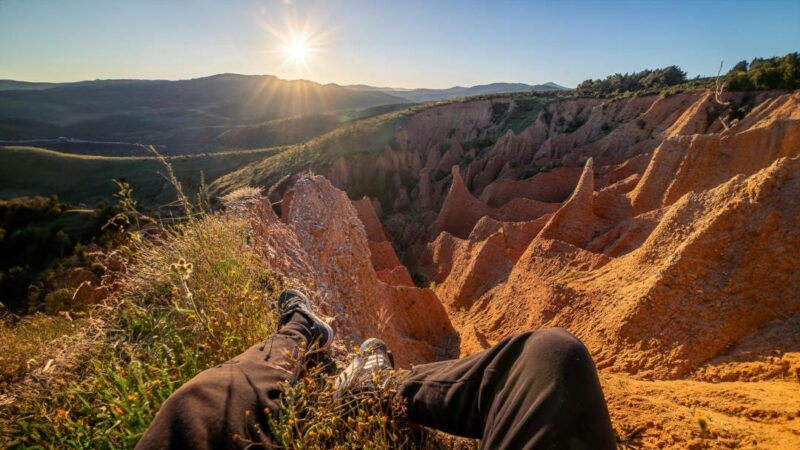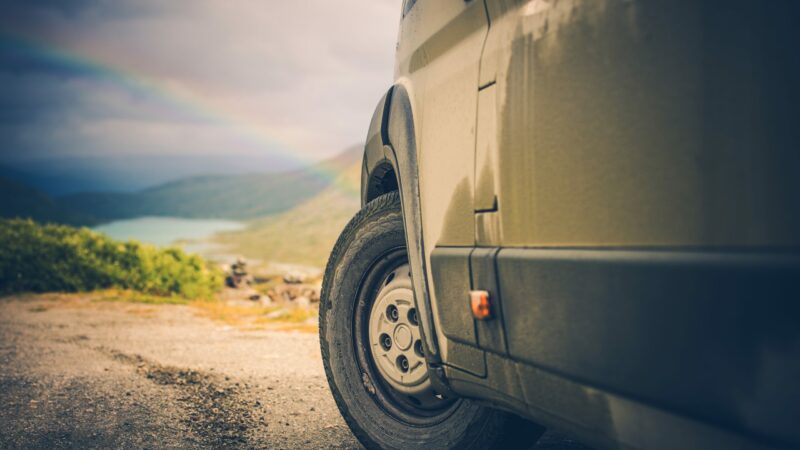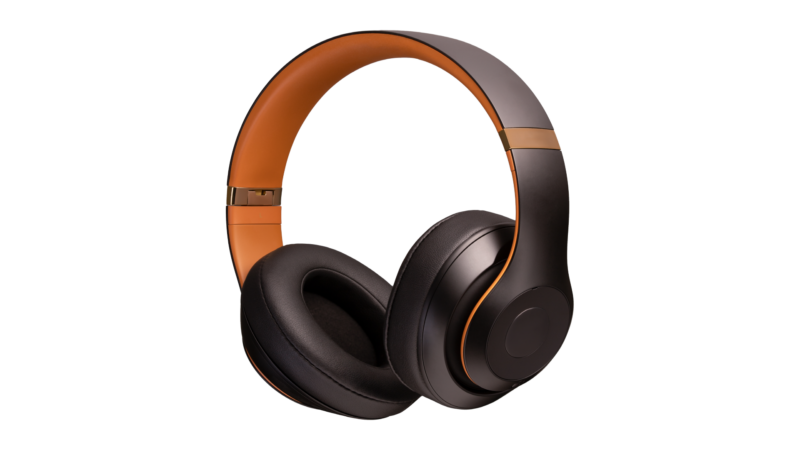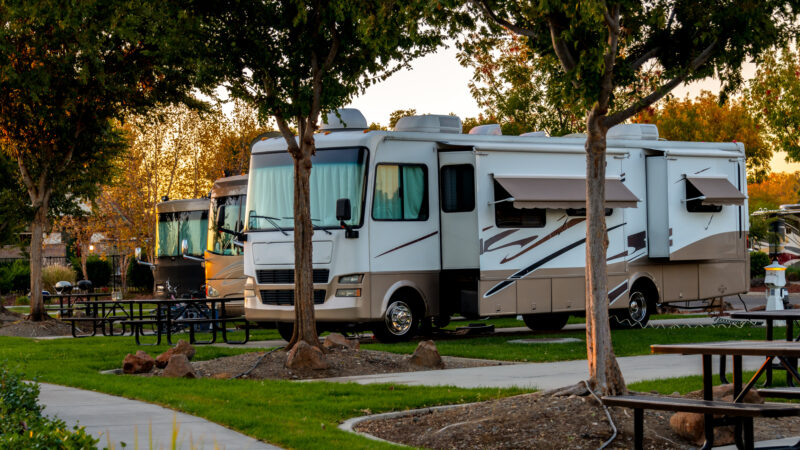Top Hardshell Jackets for 2023 to Keep You Protected and Dry | I Heart RVing

Both in-store and online, the world of outdoor apparel is vast. And when you’re looking for specific gear, such as a hardshell jacket, it’s easy to get lost in all the choices. Paralysis by analysis is a real thing that gets worse when there are racks and racks or endless screens to scroll through. So, it’s best to reign in your options with some of the best hardshell jackets to keep you protected and dry during your fall, winter, and early spring adventures. That’s why we’ve done much of the hard work for you to narrow down some of the options.
What Is a Hardshell Jacket and How Does it Differ from a Softshell Jacket?
Both hardshell and softshell jackets offer benefits to keep you warm and dry as the temperatures drop. The biggest difference is that a hardshell jacket provides waterproofing to keep you dry in rainy or snowy weather. Good hardshell jackets also offer breathability, so you can enjoy activities without getting uncomfortably hot and sweaty. They’re called “hardshells” due to the materials they’re made of, which tend to sound and feel a bit crinkly or swoosh as you move. The harder shells also typically offer greater durability for more intense outdoor adventures.
A softshell jacket, on the other hand, is water-resistant, rather than waterproof. They’re often highly breathable, but they’re typically only suitable for short and light rain or snow showers. These soft, comfortable jackets are often designed for greater ease of movement and to keep the body at a stable temperature during higher-intensity activities.
If you’re out hiking, camping, skiing, or backpacking, both a hard- and soft-shell jacket can be indispensable. The soft shell can help keep you cozy and warm, whereas the hardshell jacket can keep you dry and protected in heavy rain, snow, or sleet as well as protect against winds. Compared to a simple rain jacket, hardshell jackets generally provide a lot more protection. For instance, rain jackets often rate between 5,000 and 20,000 mm. Hardshell ratings typically start at 20,000 mm and often get up to 30,000 mm due to their specialized membranes, which means they’ll stand up against the heaviest rain and snow storms.
How do hardshell jackets keep rain and snow from seeping in yet remain breathable, so you don’t overheat? Waterproof materials are made of laminated materials that are highly porous, with over 9 billion pores per square inch for polytetrafluoroethylene, for example. Yet each pore is 20,000 times smaller than a drop of water. That’s also 700 times bigger than a molecule of water vapor. This ratio allows water vapor to disperse without allowing large drops to seep in, so you’ll feel drier and more comfortable no matter the weather or activity.
Fortunately, you can easily bring both a softshell and a hardshell jacket with you as these layers are light and easy to pack. Hardshell jackets are even lighter and take up less space in a pack to pull out when you need that extra layer. Softshell jackets typically aren’t as lightweight or as easy to pack. They are, however, a light, versatile layer for everyday wear as the weather starts to turn.
What Are Hardshell Jackets Made From?
Since 2007 when GORE-TEX Pro was introduced, it has been the benchmark for quality when it comes to performance weatherproofing. It’s made with several layers of polytetrafluoroethylene (or ePTFE) bonded together with a Micro-Grid backer for superior protection and breathability. Unfortunately, the fluoro part of the chemical has been found to be less than environmentally friendly. Luckily, you can find GORE-TEX and other high-performance water-proof materials made with polyethylene instead. With this change in material, though, these hardshell jackets are somewhat less breathable. To make up for this, you can find many of these types of jackets with added ventilation, such as underarm pit zips.
Other popular materials chosen for their performance include Toray Dermizax® NC, which is made with a polyurethane-based membrane to keep water out while allowing the skin to breathe. Other manufacturers also have their own proprietary materials. For instance, The North Face® has introduced a new breathable membrane called FUTURELIGHT™. It uses a “nanospun” polyurethane to keep rain and snow out while allowing water vapors to escape. Patagonia® has a proprietary membrane called H2No® Standard Performance. And Helly Hansen’s offers LIFA Infinity Pro™. All of these new materials have stood up to intense testing both in the lab and in the real world.
Top 7 Brands for Hardshell Jackets
Now that you know what to look for in a hardshell jacket, the next question is which brands provide the highest quality. Again, there are choices. But to get the highest level of performance, we recommend skipping past inexpensive “dupes” and choosing your hardshell from a well-respected outdoor brand. Some of our favorites include:
- Patagonia Storm10, which is ultralight and easy to pack, is perfect for backpacking or alpine climbing when weight is a big concern.
- Arc’teryx Beta AR provides a near perfect mix of performance, craftsmanship, and fit, though it’s not as easy to pack nor as lightweight as the Patagonia hardshell above.
- Arc’teryx Alpha SV, which protects against the harshest weather, including driving rains, sleet, and piercing winds with rugged construction for the most trying adventures.
- Outdoor Research Microgravity, which is one of the most comfortable and affordable options available.
- Rab Arc Eco Jacket is one of the most eco-friendly as it’s made with 100% recycled polyester materials with three breathable layers to protect you during a downpour without becoming overheated.
- Mountain Hardware Boundary Ridge will keep you not only dry but warm and is the right layer for winter camping, snowshoeing, or cold-weather skiing. It is heavier and bulkier than other options, but it also provides generous pit zips to help prevent overheating.
- Stio Ender PACLITE® Hooded Jacket is another more affordable option that provides well-rounded protection. It’s lightweight, breathable, and durable, but it may not be up to the most rugged adventures.
- Helly Hansen Odin Mountain Infinity 3L, in contrast, is designed for the absolute most intense winter conditions. It may look svelte, but it keeps the freezing winds at bay, so you can stay outdoors longer even when conditions are far from favorable.
Choosing the right hardshell jacket can keep you dry, warm, and comfortable no matter where your adventures take you—to high mountains or while packing up the RV in a rainstorm. Fortunately, there are several different options that range from lightweight and packable to heavyweight and durable. You can also find hardshell jackets that provide added hoods (even ones that can cover a ski or mountaineering helmet), hand pockets, pit zips, and other features to keep you comfortable, which, depending on your needs, can also help narrow down the choices.






